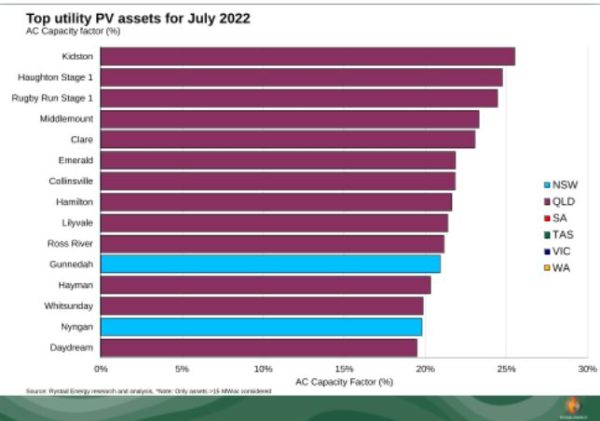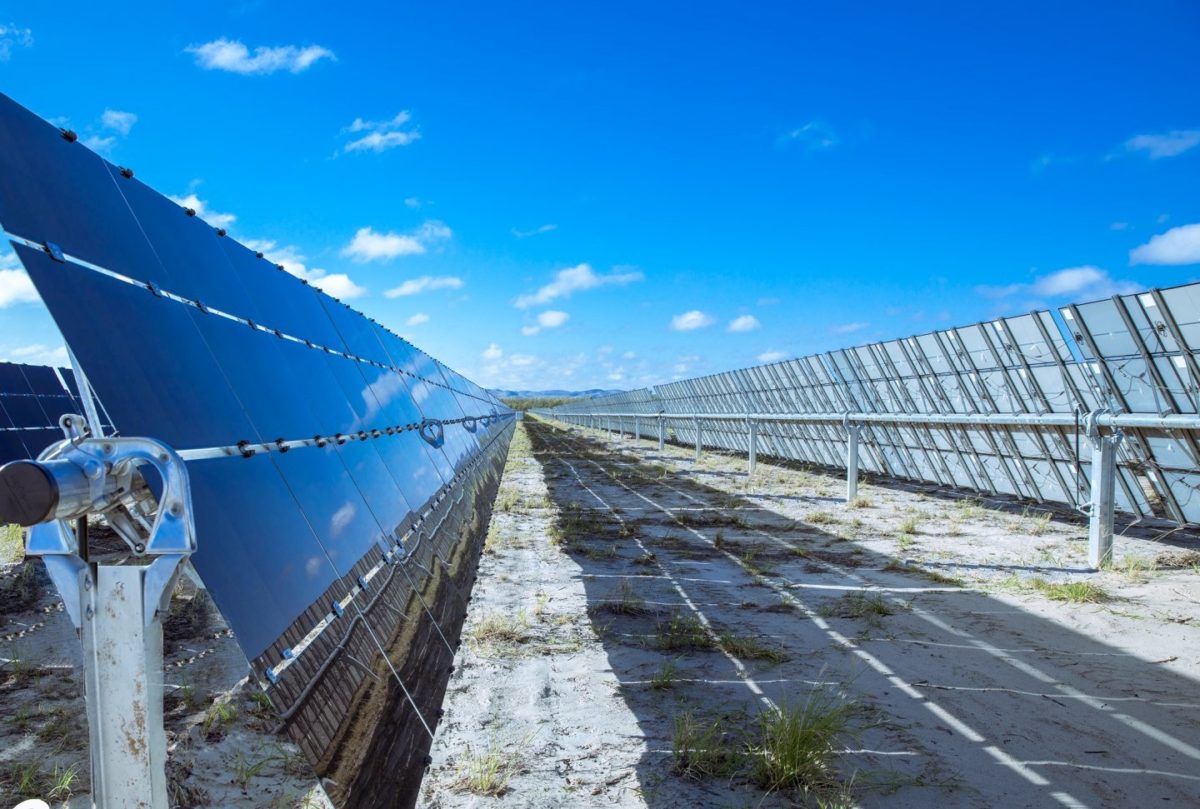The Kidston Solar Farm has been declared Australia’s best performing utility PV asset for the fourth consecutive month with the latest data from consultancy firm Rystad Energy revealing that the nation’s top 10 solar farms in terms of capacity factor in the month of July are all located in Queensland.
The clear leader, for the fourth month in a row, was the 50 MW Kidston Solar Farm with senior Rystad analyst David Dixon noting the far north Queensland facility had delivered an average AC capacity factor (CF) of 25.5% for the month.
The announcement comes after Genex on Monday turned down a takeover bid from a consortium comprising Atlassian co-founder Scott Farquhar’s private investment fund Skip Capital, and US equity firm Stonepeak Partners.
The company’s board said that after careful consideration of the proposal it had unanimously concluded the offer undervalued Genex. It did however say it is willing to “engage constructively” with the consortium to explore whether it can submit a revised proposal that is capable of being recommended to Genex shareholders.
The Kidston Solar Farm, which Genex has been operating since 2017, is part of the planned Kidston Clean Energy Hub, which is to include a 250 MW/2 GWh pumped hydro energy storage facility while up to 270 MW of additional solar and up to 150 MW of wind generation have also been proposed.
Queensland solar assets dominated large-scale PV generation for July with the best performing solar farms in Australia all located in the state. The Kidston Solar Farm was followed by Pacific Hydro Australia’s 100 MW Haughton stage 1 solar farm, at a capacity factor of 24.7%, and Adani Australia’s 65 MW Rugby Run Solar Farm, with 24.4% AC CF.

Dixon said the top three remained the same as last month while Queensland assets had filled out the top 10 with the Gunnedah and Nyngan solar farms in regional New South Wales the only assets from outside of the Sunshine State to feature in the top 15.
The 110 MW Gunnedah Solar Farm, recently acquired by CalEnergy Resources, an offshoot of United States renewable energy giant Berkshire Hathaway Energy. was ranked 11th while Tilt Renewables’ 102 MW Nyngan Solar Farm was ranked 14th.
Utility scale PV generation for the month increased 44% year on year to a total of 767 GWh, up from 532 GWh in July 2021.
The bulk of the large-scale solar PV power for the month was generated in Queensland and NSW, which were evenly matched on capacity energised (just over 2.5 GW each) and generation (~300 GWh/month each).
Dixon said Australian utility PV and wind assets had generated a combined total of 3441 GWh for the month, up 4% from 3320 GWh this time last year.
Wind generation declined from 2,788 GWh in July 2021 to 2,673 GWh this year with the Kiata Wind Farm (51.5% CF) in Victoria the best-performing utility wind asset for the month, followed by the Biala (50.8% CF) and Cullerin Range wind farms (45.5% CF) in NSW.
At a state level, NSW surpassed 600 GWh of wind generation for the first time, benefitting from the ramp up of the Bango Wind Farm. Victoria continues to be the market leader for wind with more than 4 GW energised, with SA and NSW a distant second and third.
This content is protected by copyright and may not be reused. If you want to cooperate with us and would like to reuse some of our content, please contact: editors@pv-magazine.com.









By submitting this form you agree to pv magazine using your data for the purposes of publishing your comment.
Your personal data will only be disclosed or otherwise transmitted to third parties for the purposes of spam filtering or if this is necessary for technical maintenance of the website. Any other transfer to third parties will not take place unless this is justified on the basis of applicable data protection regulations or if pv magazine is legally obliged to do so.
You may revoke this consent at any time with effect for the future, in which case your personal data will be deleted immediately. Otherwise, your data will be deleted if pv magazine has processed your request or the purpose of data storage is fulfilled.
Further information on data privacy can be found in our Data Protection Policy.